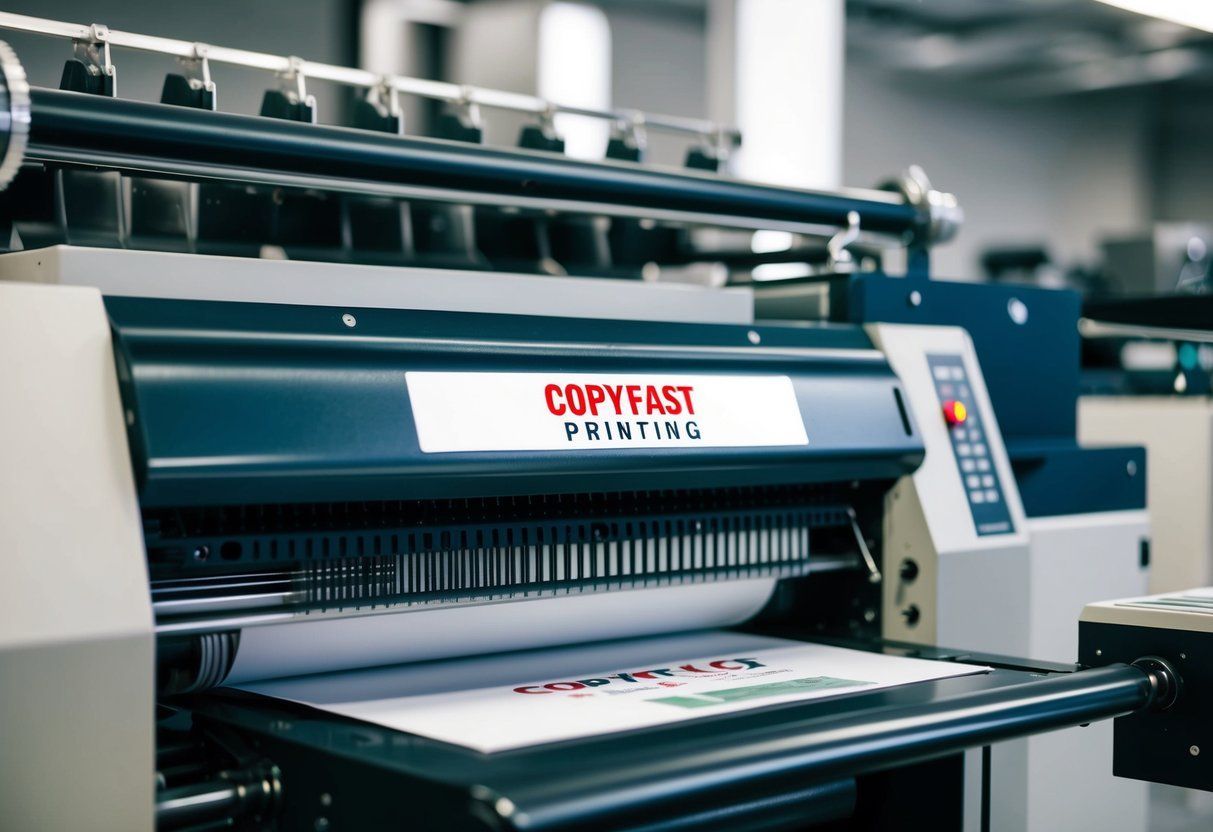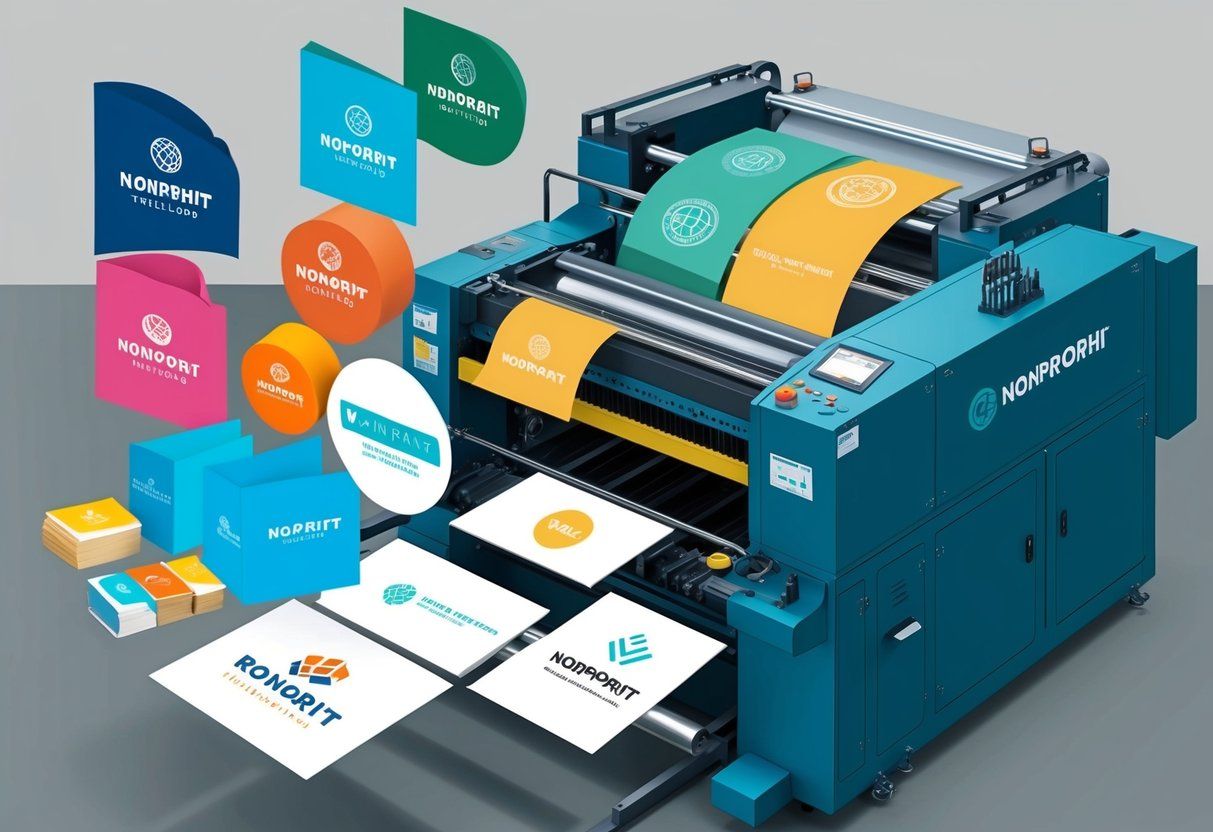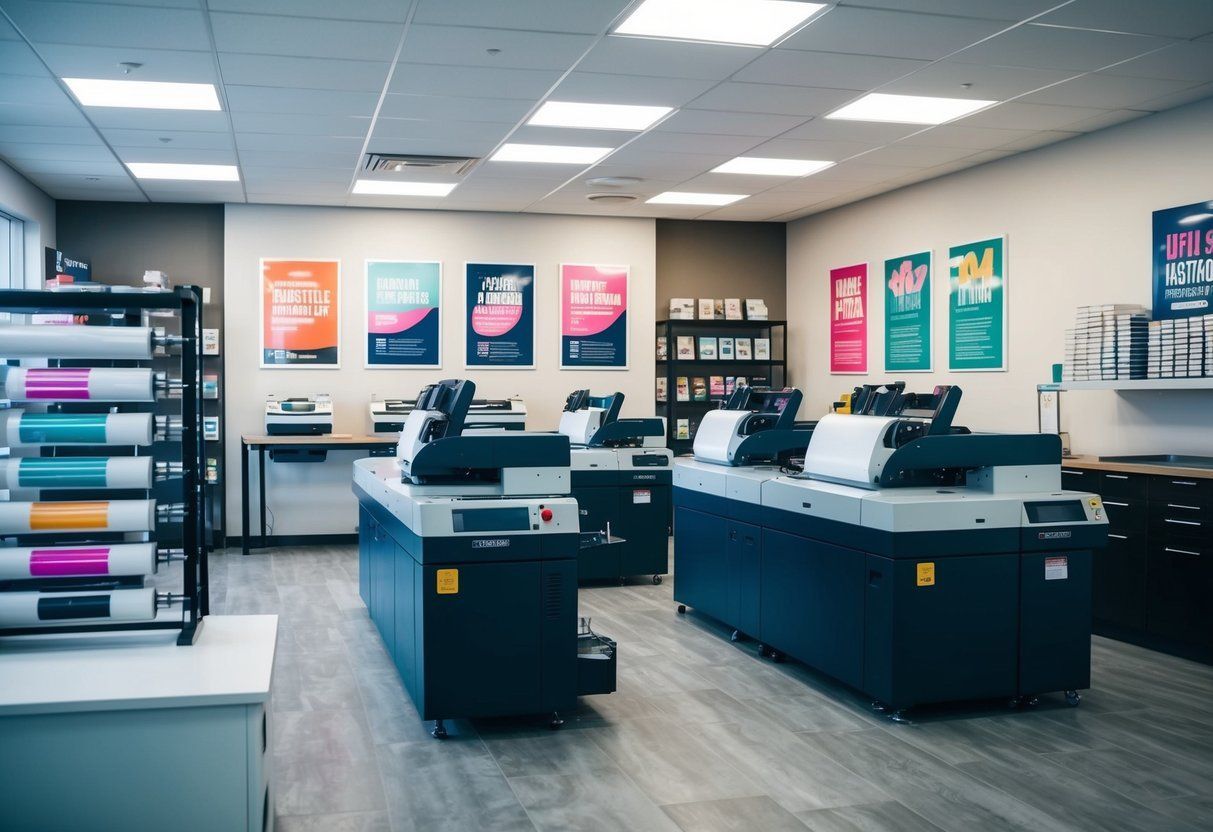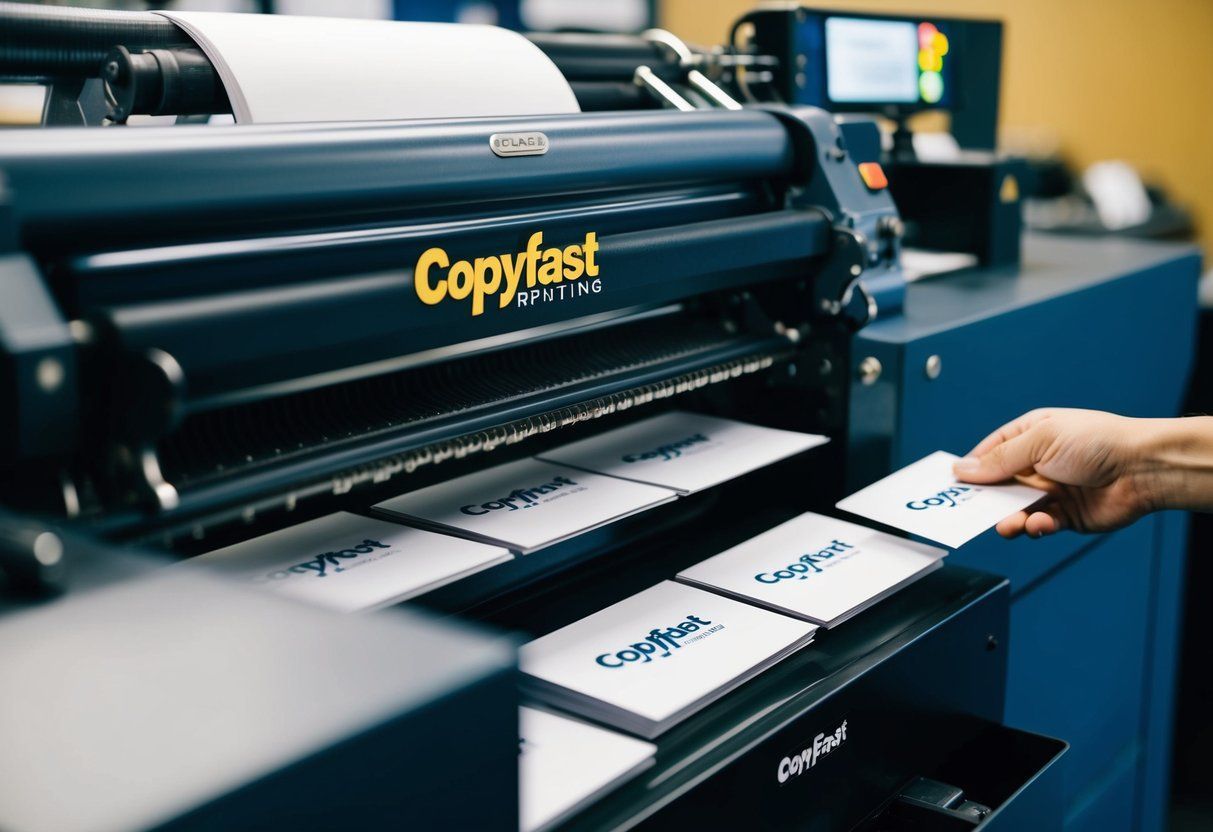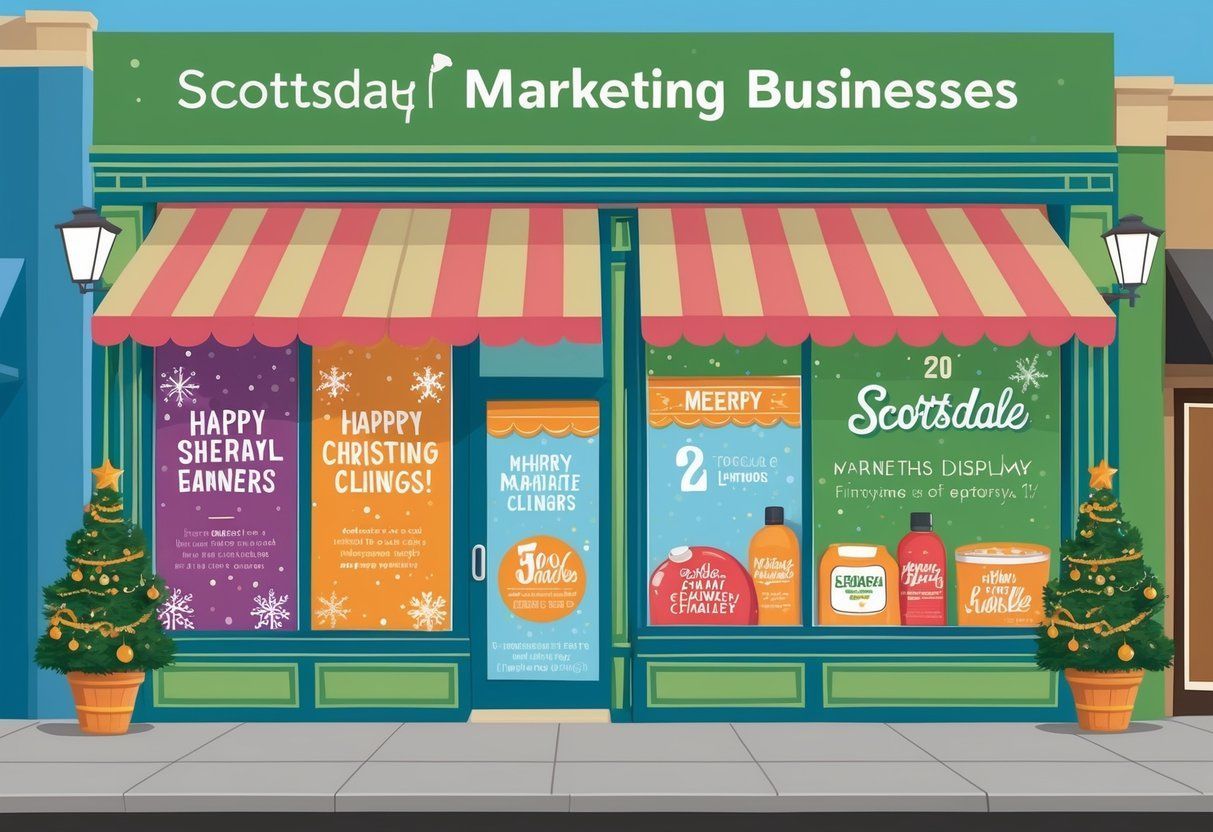Scottsdale Print Shop ) Mesa Print Shop ) Tempe Print Shop ) Phoenix Print Shop ) DC Ranch Print Shop ) Chandler Print Shop ) Peoria Print Shop ) Fountain Hills Print Shop ) Sun City Print Shop ) Glendale Print Shop ) Paradise Valley Print Shop ) Goodyear Print Shop ) Queen Creek Print Shop ) Avondale Print Shop ) Desert Ridge Print Shop ) Apache Junction Print Shop ) North Scottsdale Print Shop ) Pinnacle Peak Print Shop ) Grayawk Print Shop ) Kierland Print Shop ) Windsong Print Shop ) Mcdowell Mountain Ranch Print Shop ) Gainey Ranch Print Shop ) McCormick Ranch Print Shop ) Deer Valley Print Shop ) Arcadia Print Shop ) Troon Print Shop ) Silverleaf Print Shop ) Cave Creek Print Shop ) Old Town Print Shop ) South Scottsdale Print Shop ) Ancala Print Shop ) Central Phoenix Print Shop ) Carefree Print Shop ) Toleson Print Shop ) Ironwood Village Print Shop ) WIndgate Ranch Print Shop ) Northsight Print Shop ) Shea Print Shop ) Tatum Ranch Print Shop ) Casa Grande Print Shop ) Gilbert Print Shop ) Suprise Print Shop ) Buckeye Print Shop ) Scottsdale Banner Printing ) Mesa Banner Printing ) Tempe Banner Printing ) Phoenix Banner Printing ) DC Ranch Banner Printing ) Chandler Banner Printing ) Peoria Banner Printing ) Fountain Hills Banner Printing ) Sun City Banner Printing ) Glendale Banner Printing ) Paradise Valley Banner Printing ) Goodyear Banner Printing ) Queen Creek Banner Printing ) Avondale Banner Printing ) Desert Ridge Banner Printing ) Apache Junction Banner Printing ) North Scottsdale Banner Printing ) Pinnacle Peak Banner Printing ) Grayawk Banner Printing ) Kierland Banner Printing ) Windsong Banner Printing ) Mcdowell Mountain Ranch Banner Printing ) Gainey Ranch Banner Printing ) McCormick Ranch Banner Printing ) Deer Valley Banner Printing ) Arcadia Banner Printing ) Troon Banner Printing ) Silverleaf Banner Printing ) Cave Creek Banner Printing ) Old Town Banner Printing ) South Scottsdale Banner Printing ) Ancala Banner Printing ) Central Phoenix Banner Printing ) Carefree Banner Printing ) Toleson Banner Printing ) Ironwood Village Banner Printing ) WIndgate Ranch Banner Printing ) Northsight Banner Printing ) Shea Banner Printing ) Tatum Ranch Banner Printing ) Casa Grande Banner Printing ) Gilbert Banner Printing ) Suprise Banner Printing ) Buckeye Banner Printing ) Scottsdale Book Binding ) Mesa Book Binding ) Tempe Book Binding ) Phoenix Book Binding ) DC Ranch Book Binding ) Chandler Book Binding ) Peoria Book Binding ) Fountain Hills Book Binding ) Sun City Book Binding ) Glendale Book Binding ) Paradise Valley Book Binding ) Goodyear Book Binding ) Queen Creek Book Binding ) Avondale Book Binding ) Desert Ridge Book Binding ) Apache Junction Book Binding ) North Scottsdale Book Binding ) Pinnacle Peak Book Binding ) Grayawk Book Binding ) Kierland Book Binding ) Windsong Book Binding ) Mcdowell Mountain Ranch Book Binding ) Gainey Ranch Book Binding ) McCormick Ranch Book Binding ) Deer Valley Book Binding ) Arcadia Book Binding ) Troon Book Binding ) Silverleaf Book Binding ) Cave Creek Book Binding ) Old Town Book Binding ) South Scottsdale Book Binding ) Ancala Book Binding ) Central Phoenix Book Binding ) Carefree Book Binding ) Toleson Book Binding ) Ironwood Village Book Binding ) WIndgate Ranch Book Binding ) Northsight Book Binding ) Shea Book Binding ) Tatum Ranch Book Binding ) Casa Grande Book Binding ) Gilbert Book Binding ) Suprise Book Binding ) Buckeye Book Binding ) Scottsdale Booklet Printing ) Mesa Booklet Printing ) Tempe Booklet Printing ) Phoenix Booklet Printing ) DC Ranch Booklet Printing ) Chandler Booklet Printing ) Peoria Booklet Printing ) Fountain Hills Booklet Printing ) Sun City Booklet Printing ) Glendale Booklet Printing ) Paradise Valley Booklet Printing ) Goodyear Booklet Printing ) Queen Creek Booklet Printing ) Avondale Booklet Printing ) Desert Ridge Booklet Printing ) Apache Junction Booklet Printing ) North Scottsdale Booklet Printing ) Pinnacle Peak Booklet Printing ) Grayawk Booklet Printing ) Kierland Booklet Printing ) Windsong Booklet Printing ) Mcdowell Mountain Ranch Booklet Printing ) Gainey Ranch Booklet Printing ) McCormick Ranch Booklet Printing ) Deer Valley Booklet Printing ) Arcadia Booklet Printing ) Troon Booklet Printing ) Silverleaf Booklet Printing ) Cave Creek Booklet Printing ) Old Town Booklet Printing ) South Scottsdale Booklet Printing ) Ancala Booklet Printing ) Central Phoenix Booklet Printing ) Carefree Booklet Printing ) Toleson Booklet Printing ) Ironwood Village Booklet Printing ) WIndgate Ranch Booklet Printing ) Northsight Booklet Printing ) Shea Booklet Printing ) Tatum Ranch Booklet Printing ) Casa Grande Booklet Printing ) Gilbert Booklet Printing ) Suprise Booklet Printing ) Buckeye Booklet Printing ) Scottsdale Brochure Printing ) Mesa Brochure Printing ) Tempe Brochure Printing ) Phoenix Brochure Printing ) DC Ranch Brochure Printing ) Chandler Brochure Printing ) Peoria Brochure Printing ) Fountain Hills Brochure Printing ) Sun City Brochure Printing ) Glendale Brochure Printing ) Paradise Valley Brochure Printing ) Goodyear Brochure Printing ) Queen Creek Brochure Printing ) Avondale Brochure Printing ) Desert Ridge Brochure Printing ) Apache Junction Brochure Printing ) North Scottsdale Brochure Printing ) Pinnacle Peak Brochure Printing ) Grayawk Brochure Printing ) Kierland Brochure Printing ) Windsong Brochure Printing ) Mcdowell Mountain Ranch Brochure Printing ) Gainey Ranch Brochure Printing ) McCormick Ranch Brochure Printing ) Deer Valley Brochure Printing ) Arcadia Brochure Printing ) Troon Brochure Printing ) Silverleaf Brochure Printing ) Cave Creek Brochure Printing ) Old Town Brochure Printing ) South Scottsdale Brochure Printing ) Ancala Brochure Printing ) Central Phoenix Brochure Printing ) Carefree Brochure Printing ) Toleson Brochure Printing ) Ironwood Village Brochure Printing ) WIndgate Ranch Brochure Printing ) Northsight Brochure Printing ) Shea Brochure Printing ) Tatum Ranch Brochure Printing ) Casa Grande Brochure Printing ) Gilbert Brochure Printing ) Suprise Brochure Printing ) Buckeye Brochure Printing ) Scottsdale Business Card Printing ) Mesa Business Card Printing ) Tempe Business Card Printing ) Phoenix Business Card Printing ) DC Ranch Business Card Printing ) Chandler Business Card Printing ) Peoria Business Card Printing ) Fountain Hills Business Card Printing ) Sun City Business Card Printing ) Glendale Business Card Printing ) Paradise Valley Business Card Printing ) Goodyear Business Card Printing ) Queen Creek Business Card Printing ) Avondale Business Card Printing ) Desert Ridge Business Card Printing ) Apache Junction Business Card Printing ) North Scottsdale Business Card Printing ) Pinnacle Peak Business Card Printing ) Grayawk Business Card Printing ) Kierland Business Card Printing ) Windsong Business Card Printing ) Mcdowell Mountain Ranch Business Card Printing ) Gainey Ranch Business Card Printing ) McCormick Ranch Business Card Printing ) Deer Valley Business Card Printing ) Arcadia Business Card Printing ) Troon Business Card Printing ) Silverleaf Business Card Printing ) Cave Creek Business Card Printing ) Old Town Business Card Printing ) South Scottsdale Business Card Printing ) Ancala Business Card Printing ) Central Phoenix Business Card Printing ) Carefree Business Card Printing ) Toleson Business Card Printing ) Ironwood Village Business Card Printing ) WIndgate Ranch Business Card Printing ) Northsight Business Card Printing ) Shea Business Card Printing ) Tatum Ranch Business Card Printing ) Casa Grande Business Card Printing ) Gilbert Business Card Printing ) Suprise Business Card Printing ) Buckeye Business Card Printing ) Scottsdale Catalog Printing ) Mesa Catalog Printing ) Tempe Catalog Printing ) Phoenix Catalog Printing ) DC Ranch Catalog Printing ) Chandler Catalog Printing ) Peoria Catalog Printing ) Fountain Hills Catalog Printing ) Sun City Catalog Printing ) Glendale Catalog Printing ) Paradise Valley Catalog Printing ) Goodyear Catalog Printing ) Queen Creek Catalog Printing ) Avondale Catalog Printing ) Desert Ridge Catalog Printing ) Apache Junction Catalog Printing ) North Scottsdale Catalog Printing ) Pinnacle Peak Catalog Printing ) Grayawk Catalog Printing ) Kierland Catalog Printing ) Windsong Catalog Printing ) Mcdowell Mountain Ranch Catalog Printing ) Gainey Ranch Catalog Printing ) McCormick Ranch Catalog Printing ) Deer Valley Catalog Printing ) Arcadia Catalog Printing ) Troon Catalog Printing ) Silverleaf Catalog Printing ) Cave Creek Catalog Printing ) Old Town Catalog Printing ) South Scottsdale Catalog Printing ) Ancala Catalog Printing ) Central Phoenix Catalog Printing ) Carefree Catalog Printing ) Toleson Catalog Printing ) Ironwood Village Catalog Printing ) WIndgate Ranch Catalog Printing ) Northsight Catalog Printing ) Shea Catalog Printing ) Tatum Ranch Catalog Printing ) Casa Grande Catalog Printing ) Gilbert Catalog Printing ) Suprise Catalog Printing ) Buckeye Catalog Printing ) Scottsdale Commercial Printing ) Mesa Commercial Printing ) Tempe Commercial Printing ) Phoenix Commercial Printing ) DC Ranch Commercial Printing ) Chandler Commercial Printing ) Peoria Commercial Printing ) Fountain Hills Commercial Printing ) Sun City Commercial Printing ) Glendale Commercial Printing ) Paradise Valley Commercial Printing ) Goodyear Commercial Printing ) Queen Creek Commercial Printing ) Avondale Commercial Printing ) Desert Ridge Commercial Printing ) Apache Junction Commercial Printing ) North Scottsdale Commercial Printing ) Pinnacle Peak Commercial Printing ) Grayawk Commercial Printing ) Kierland Commercial Printing ) Windsong Commercial Printing ) Mcdowell Mountain Ranch Commercial Printing ) Gainey Ranch Commercial Printing ) McCormick Ranch Commercial Printing ) Deer Valley Commercial Printing ) Arcadia Commercial Printing ) Troon Commercial Printing ) Silverleaf Commercial Printing ) Cave Creek Commercial Printing ) Old Town Commercial Printing ) South Scottsdale Commercial Printing ) Ancala Commercial Printing ) Central Phoenix Commercial Printing ) Carefree Commercial Printing ) Toleson Commercial Printing ) Ironwood Village Commercial Printing ) WIndgate Ranch Commercial Printing ) Northsight Commercial Printing ) Shea Commercial Printing ) Tatum Ranch Commercial Printing ) Casa Grande Commercial Printing ) Gilbert Commercial Printing ) Suprise Commercial Printing ) Buckeye Commercial Printing ) Scottsdale Coroplast Signs ) Mesa Coroplast Signs ) Tempe Coroplast Signs ) Phoenix Coroplast Signs ) Scottsdale Digital Printing ) Mesa Digital Printing ) Tempe Digital Printing ) Phoenix Digital Printing ) DC Ranch Digital Printing ) Chandler Digital Printing ) Peoria Digital Printing ) Fountain Hills Digital Printing ) Sun City Digital Printing ) Glendale Digital Printing ) Paradise Valley Digital Printing ) Goodyear Digital Printing ) Queen Creek Digital Printing ) Avondale Digital Printing ) Desert Ridge Digital Printing ) Apache Junction Digital Printing ) North Scottsdale Digital Printing ) Pinnacle Peak Digital Printing ) Grayawk Digital Printing ) Kierland Digital Printing ) Windsong Digital Printing ) Mcdowell Mountain Ranch Digital Printing ) Gainey Ranch Digital Printing ) McCormick Ranch Digital Printing ) Deer Valley Digital Printing ) Arcadia Digital Printing ) Troon Digital Printing ) Silverleaf Digital Printing ) Cave Creek Digital Printing ) Old Town Digital Printing ) South Scottsdale Digital Printing ) Ancala Digital Printing ) Central Phoenix Digital Printing ) Carefree Digital Printing ) Toleson Digital Printing ) Ironwood Village Digital Printing ) WIndgate Ranch Digital Printing ) Northsight Digital Printing ) Shea Digital Printing ) Tatum Ranch Digital Printing ) Casa Grande Digital Printing ) Gilbert Digital Printing ) Suprise Digital Printing ) Buckeye Digital Printing ) Scottsdale Direct Mailing Services ) Mesa Direct Mailing Services ) Tempe Direct Mailing Services ) Phoenix Direct Mailing Services ) DC Ranch Direct Mailing Services ) Chandler Direct Mailing Services ) Peoria Direct Mailing Services ) Fountain Hills Direct Mailing Services ) Sun City Direct Mailing Services ) Glendale Direct Mailing Services ) Paradise Valley Direct Mailing Services ) Goodyear Direct Mailing Services ) Queen Creek Direct Mailing Services ) Avondale Direct Mailing Services ) Desert Ridge Direct Mailing Services ) Apache Junction Direct Mailing Services ) North Scottsdale Direct Mailing Services ) Pinnacle Peak Direct Mailing Services ) Grayawk Direct Mailing Services ) Kierland Direct Mailing Services ) Windsong Direct Mailing Services ) Mcdowell Mountain Ranch Direct Mailing Services ) Gainey Ranch Direct Mailing Services ) McCormick Ranch Direct Mailing Services ) Deer Valley Direct Mailing Services ) Arcadia Direct Mailing Services ) Troon Direct Mailing Services ) Silverleaf Direct Mailing Services ) Cave Creek Direct Mailing Services ) Old Town Direct Mailing Services ) South Scottsdale Direct Mailing Services ) Ancala Direct Mailing Services ) Central Phoenix Direct Mailing Services ) Carefree Direct Mailing Services ) Toleson Direct Mailing Services ) Ironwood Village Direct Mailing Services ) WIndgate Ranch Direct Mailing Services ) Northsight Direct Mailing Services ) Shea Direct Mailing Services ) Tatum Ranch Direct Mailing Services ) Casa Grande Direct Mailing Services ) Gilbert Direct Mailing Services ) Suprise Direct Mailing Services ) Buckeye Direct Mailing Services ) Scottsdale Flyer Printing ) Mesa Flyer Printing ) Tempe Flyer Printing ) Phoenix Flyer Printing ) DC Ranch Flyer Printing ) Chandler Flyer Printing ) Peoria Flyer Printing ) Fountain Hills Flyer Printing ) Sun City Flyer Printing ) Glendale Flyer Printing ) Paradise Valley Flyer Printing ) Goodyear Flyer Printing ) Queen Creek Flyer Printing ) Avondale Flyer Printing ) Desert Ridge Flyer Printing ) Apache Junction Flyer Printing ) North Scottsdale Flyer Printing ) Pinnacle Peak Flyer Printing ) Grayawk Flyer Printing ) Kierland Flyer Printing ) Windsong Flyer Printing ) Mcdowell Mountain Ranch Flyer Printing ) Gainey Ranch Flyer Printing ) McCormick Ranch Flyer Printing ) Deer Valley Flyer Printing ) Arcadia Flyer Printing ) Troon Flyer Printing ) Silverleaf Flyer Printing ) Cave Creek Flyer Printing ) Old Town Flyer Printing ) South Scottsdale Flyer Printing ) Ancala Flyer Printing ) Central Phoenix Flyer Printing ) Carefree Flyer Printing ) Toleson Flyer Printing ) Ironwood Village Flyer Printing ) WIndgate Ranch Flyer Printing ) Northsight Flyer Printing ) Shea Flyer Printing ) Tatum Ranch Flyer Printing ) Casa Grande Flyer Printing ) Gilbert Flyer Printing ) Suprise Flyer Printing ) Buckeye Flyer Printing ) Scottsdale Graphic Design ) Mesa Graphic Design ) Tempe Graphic Design ) Phoenix Graphic Design ) DC Ranch Graphic Design ) Chandler Graphic Design ) Peoria Graphic Design ) Fountain Hills Graphic Design ) Sun City Graphic Design ) Glendale Graphic Design ) Paradise Valley Graphic Design ) Goodyear Graphic Design ) Queen Creek Graphic Design ) Avondale Graphic Design ) Desert Ridge Graphic Design ) Apache Junction Graphic Design ) North Scottsdale Graphic Design ) Pinnacle Peak Graphic Design ) Grayawk Graphic Design ) Kierland Graphic Design ) Windsong Graphic Design ) Mcdowell Mountain Ranch Graphic Design ) Gainey Ranch Graphic Design ) McCormick Ranch Graphic Design ) Deer Valley Graphic Design ) Arcadia Graphic Design ) Troon Graphic Design ) Silverleaf Graphic Design ) Cave Creek Graphic Design ) Old Town Graphic Design ) South Scottsdale Graphic Design ) Ancala Graphic Design ) Central Phoenix Graphic Design ) Carefree Graphic Design ) Toleson Graphic Design ) Ironwood Village Graphic Design ) WIndgate Ranch Graphic Design ) Northsight Graphic Design ) Shea Graphic Design ) Tatum Ranch Graphic Design ) Casa Grande Graphic Design ) Gilbert Graphic Design ) Suprise Graphic Design ) Buckeye Graphic Design ) Scottsdale Large Format Printing ) Mesa Large Format Printing ) Tempe Large Format Printing ) Phoenix Large Format Printing ) DC Ranch Large Format Printing ) Chandler Large Format Printing ) Peoria Large Format Printing ) Fountain Hills Large Format Printing ) Sun City Large Format Printing ) Glendale Large Format Printing ) Paradise Valley Large Format Printing ) Goodyear Large Format Printing ) Peoria Postcard Printing ) Fountain Hills Postcard Printing ) Sun City Postcard Printing ) Glendale Postcard Printing ) Paradise Valley Postcard Printing ) Goodyear Postcard Printing ) Queen Creek Postcard Printing ) Avondale Postcard Printing ) Desert Ridge Postcard Printing ) Apache Junction Postcard Printing ) North Scottsdale Postcard Printing ) Pinnacle Peak Postcard Printing ) Grayawk Postcard Printing ) Kierland Postcard Printing ) Windsong Postcard Printing ) Mcdowell Mountain Ranch Postcard Printing ) Gainey Ranch Postcard Printing ) McCormick Ranch Postcard Printing ) Deer Valley Postcard Printing ) Arcadia Postcard Printing ) Troon Postcard Printing ) Silverleaf Postcard Printing ) Cave Creek Postcard Printing ) Old Town Postcard Printing ) South Scottsdale Postcard Printing ) Ancala Postcard Printing ) Central Phoenix Postcard Printing ) Carefree Postcard Printing ) Toleson Postcard Printing ) Ironwood Village Postcard Printing ) WIndgate Ranch Postcard Printing ) Northsight Postcard Printing ) Shea Postcard Printing ) Tatum Ranch Postcard Printing ) Casa Grande Postcard Printing ) Gilbert Postcard Printing ) Suprise Postcard Printing ) Buckeye Postcard Printing ) Scottsdale Poster Printing ) Mesa Poster Printing ) Tempe Poster Printing ) Phoenix Poster Printing ) DC Ranch Poster Printing ) Chandler Poster Printing ) Peoria Poster Printing ) Fountain Hills Poster Printing ) Sun City Poster Printing ) Glendale Poster Printing ) Paradise Valley Poster Printing ) Goodyear Poster Printing ) Queen Creek Poster Printing ) Avondale Poster Printing ) Desert Ridge Poster Printing ) Apache Junction Poster Printing ) North Scottsdale Poster Printing ) Pinnacle Peak Poster Printing ) Grayawk Poster Printing ) Kierland Poster Printing ) Windsong Poster Printing ) Mcdowell Mountain Ranch Poster Printing ) Gainey Ranch Poster Printing ) McCormick Ranch Poster Printing ) Deer Valley Poster Printing ) Arcadia Poster Printing ) Troon Poster Printing ) Silverleaf Poster Printing ) Cave Creek Poster Printing ) Old Town Poster Printing ) South Scottsdale Poster Printing ) Ancala Poster Printing ) Central Phoenix Poster Printing ) Carefree Poster Printing ) Toleson Poster Printing ) Ironwood Village Poster Printing ) WIndgate Ranch Poster Printing ) Northsight Poster Printing ) Shea Poster Printing ) Tatum Ranch Poster Printing ) Casa Grande Poster Printing ) Gilbert Poster Printing ) Suprise Poster Printing ) Buckeye Poster Printing ) Scottsdale Promotional Items Printing )
The Evolution of Printing: Enhancing Quality and Efficiency Through Technological Advancements
Printing has come a long way since the days of Johannes Gutenberg, who introduced the moveable type printing press in the 15th century.
Over the centuries, advancements in technology have significantly improved the quality and efficiency of printing processes.
Today, innovations like digital printing and 3D printing are reshaping how materials are produced and distributed.
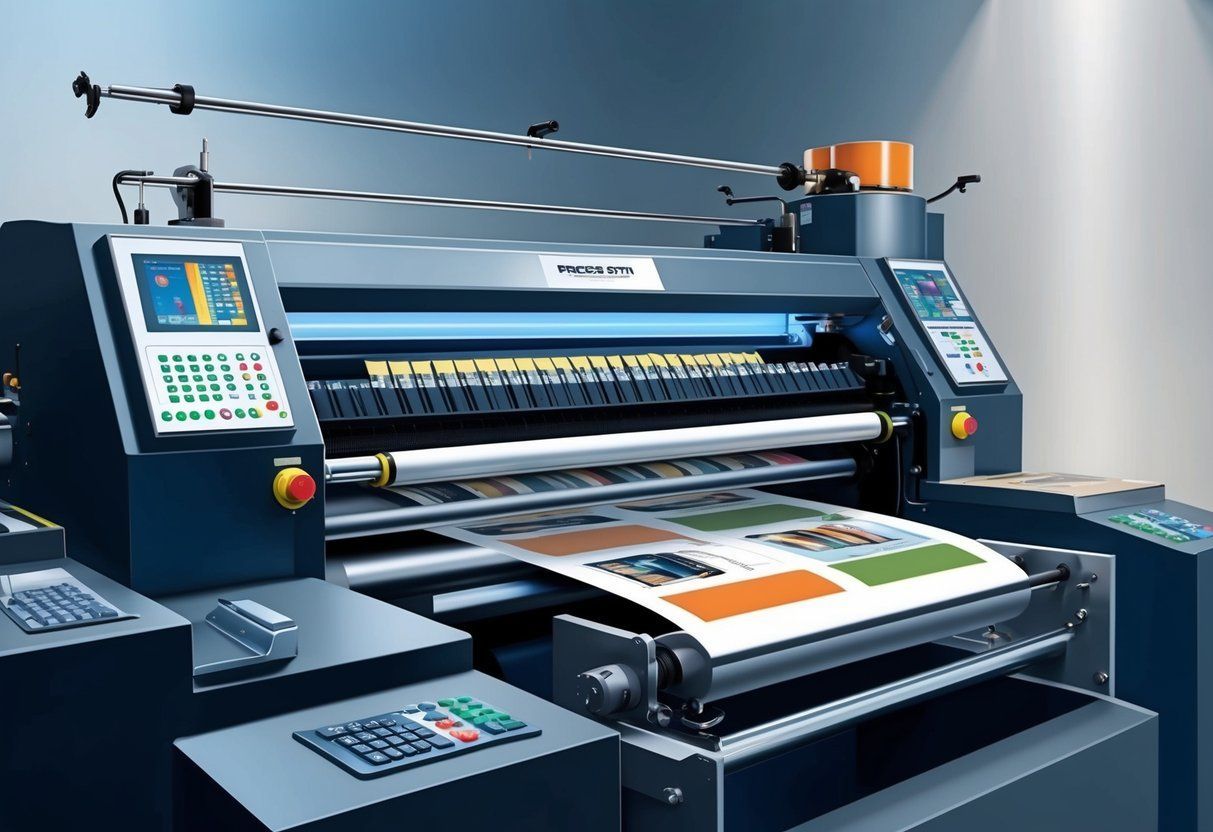
As society transitioned from traditional methods to modern techniques, the printing industry experienced a revolution. This transformation not only enhanced production speed but also allowed for more complex designs, better material usage, and reduced waste.
By embracing new technologies, printers can meet growing demands while maintaining high standards of quality.
The evolution of printing technology reflects the changing needs of businesses and consumers alike. With each advancement, from inkjet to additive manufacturing, the industry pushes the boundaries of what’s possible in printing. In this article, readers will explore how these technologies continue to enhance the printing landscape and what that means for the future.
Key Takeaways
- Printing technology has evolved from Gutenberg’s press to modern digital and 3D solutions.
- New methods improve production efficiency and material use.
- The printing industry adapts to meet contemporary consumer and business needs.
The Historical Overview of Printing
Printing has transformed communication throughout history. From ancient methods to groundbreaking inventions, these changes greatly influenced how information is shared.
From Ancient Techniques to the Gutenberg Era
Printing’s origins trace back thousands of years. Early methods include carving symbols on clay tablets and stamping images with seals .
Ancient Chinese used woodblocks to transfer ink onto paper. This early form of block printing allowed for the production of texts and images.
By the 15th century, Johannes Gutenberg developed a more advanced technique. He created movable type, which allowed individual letters to be rearranged and reused. This innovation made printing faster and more efficient, changing the landscape of written communication forever.
The Invention and Impact of the Movable Type Printing Press
Johannes Gutenberg’s movable type printing press emerged around 1440. This machine allowed for the rapid production of written works. Each letter was cast in metal, making it durable and easy to use.
The press enabled books to be produced in quantities that were previously impossible. This increase in production helped spread knowledge and ideas during the Renaissance. The printing press is often credited with promoting literacy among the general public.
Major Printing Methods: Block, Lithography, Screen Printing
Several printing methods developed over time. Block printing is one of the earliest. Artists carved images or text onto wooden blocks, inking them before pressing onto paper. This method was significant in both the East and West.
Later, in the late 18th century, lithography emerged. This method uses a flat stone to transfer an image. It allowed for more detailed illustrations and text compared to previous methods.
In the 20th century, screen printing became popular. This technique pushes ink through a mesh screen to create designs. It is widely used for textiles and promotional materials. Each of these methods has played a vital role in the evolution of printing.
Understanding Printing Technology and Processes
Printing technology has evolved to include various methods, each improving quality and efficiency. Key processes involve different types of printing, the use of printing plates, and techniques for color reproduction.
Types of Printing: Offset, Digital, 3D, and Laser
Offset printing is a traditional technique. It transfers ink from a plate to a rubber blanket and then to paper. This method is efficient for large print runs, offering high-quality results.
Digital printing has become popular for shorter runs. It prints directly from digital files, allowing for quick turnaround and less waste. Colors can be adjusted easily, making it suitable for custom jobs.
3D printing adds a new dimension to creativity. It builds objects layer by layer from materials like plastic or metal. This technology is useful in prototypes, art, and manufacturing.
Laser printing uses a laser beam to create images on a drum. It’s known for speed and precision, often used in offices for documents.
The Role of Printing Plates and Rubber Blankets
Printing plates are crucial in the offset printing process. They hold the image to be printed and are made of materials like metal or polymer. Using plates ensures consistent quality and allows for fine details.
Rubber blankets sit between the plate and paper. They help transfer the image smoothly. This layer allows for better ink control, reducing the risk of smudging or streaking.
Both components work together to achieve clear and accurate prints. Maintaining quality in these elements is essential for high-quality production.
Color Reproduction and Print Resolution
Color reproduction is about how colors appear in print. Each printing method has different capabilities. Offset printing allows for more vibrant colors, while digital printing might use limited color palettes.
Print resolution measures the clarity of printed images. It is expressed in dots per inch (DPI). A higher DPI means sharper images. Offset prints often reach higher DPI than digital prints.
Understanding both color and resolution helps achieve better results. Quality printing relies on getting these factors right for desired outcomes.
Materials and Substrates in Printing
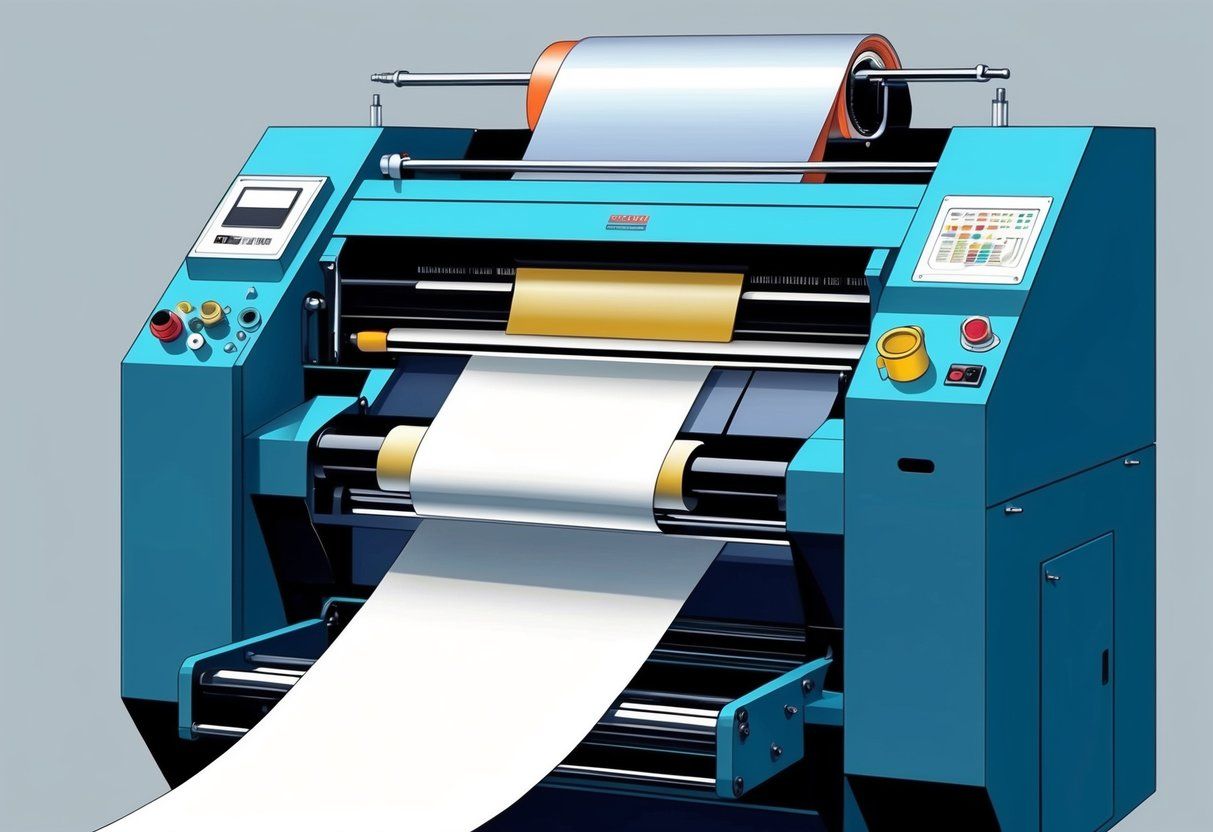
Selecting the right materials and substrates is crucial in printing. Different types of materials affect the final output, as well as the printing process. This section explores key choices in substrates, advancements in inkjet printing, and the move towards sustainable materials.
Choosing the Correct Substrate for the Job
The choice of substrate can greatly impact print quality. Common substrates include paper, plastic, and fabric. Each has unique properties that affect how ink adheres and dries.
- Paper : Available in various weights and finishes. Coated paper gives sharp images, while uncoated paper offers a more natural look.
- Plastic : Often used for outdoor signage. It is durable and weather-resistant.
- Fabric : Ideal for banners and clothing. Fabric substrates can require special inks for the best results.
Selecting the right substrate depends on the project needs, desired appearance, and durability.
Inkjet Printing and Photo Paper Advances
Inkjet printing technology has improved significantly. New types of photo paper enhance color reproduction and image clarity.
- Glossy Photo Paper : Provides vibrant colors and sharp details. This type is perfect for high-quality photographs.
- Matte Photo Paper : Offers a softer finish. It is less reflective and good for art prints.
- Specialty Papers : Some papers are designed for specific ink types, helping to reduce smudging and enhance longevity.
These advancements allow for more professional results and increased options for creatives.
Sustainability in Printing Materials
Sustainability is becoming increasingly important in the printing industry. Many companies are focused on eco-friendly materials.
- Recycled Paper : Reduces waste and the need for new resources.
- Biodegradable Inks : Made from natural materials, they are better for the environment.
- Sustainable Sourcing : Many manufacturers are using wood from responsibly managed forests.
Using sustainable materials helps lessen the environmental impact and encourages responsible printing practices.
The Rise of Digital Printing
Digital printing has changed how businesses produce materials. It offers high-quality results, faster production, and the ability to customize printed items. This section covers advancements in inkjet technology, variable data printing, and the impact of digital printing on on-demand services.
Innovations in High-Quality Inkjet Printing
High-quality inkjet printing has seen significant advancements. New print heads and ink formulas allow for sharper images and vibrant colors.
Inkjet printers now use more colors, including light cyan and light magenta. This expands the color gamut and improves gradients.
Additionally, modern printers can handle a variety of materials, like textured paper and even plastic. These innovations make inkjet printing suitable for professional projects, such as marketing materials and fine art reproduction.
Variable Data Printing (VDP) and Customization
Variable Data Printing (VDP) allows for personalization in print media. This technology can change images and text for each print, making each piece unique.
For instance, businesses can send targeted advertisements with specific customer names or interests. This level of customization increases engagement with the audience.
Some applications of VDP include direct mail, brochures, and labels. As a result, VDP plays a key role in modern marketing strategies, helping brands reach their customers more effectively.
Digital Printing’s Contribution to On-Demand Printing
Digital printing supports on-demand production. This means items can be printed as needed, reducing waste and storage costs.
Businesses can print small quantities without high setup costs. This flexibility allows companies to respond quickly to market changes.
On-demand printing is essential for limited-edition products and personalized gifts. It enables fast turnaround times, meeting customer needs efficiently. Digital printing enhances overall operational efficiency, making it a vital tool in modern production.
3D Printing and Additive Manufacturing
3D printing and additive manufacturing represent a significant shift in how products are made. These technologies allow for the creation of items layer by layer, offering new ways to prototype, customize, and personalize products.
Understanding Additive Manufacturing Processes
Additive manufacturing involves building objects from a digital file by adding material layer by layer. Common methods include Fused Deposition Modeling (FDM), Selective Laser Sintering (SLS), and Stereolithography (SLA).
- FDM : Uses thermoplastic filaments melted and extruded through a nozzle. It’s popular for its ease of use and low cost.
- SLS : Uses a laser to sinter powdered material, fusing it together to create solid layers. It works well with complex shapes.
- SLA : Involves curing liquid resin with a UV laser, known for high accuracy and smooth finishes.
These processes enable the creation of intricate designs that traditional manufacturing cannot achieve.
Prototyping and the Range of 3D Printing Applications
3D printing is widely used in prototyping. Companies can create functional prototypes quickly, allowing for faster testing and iteration. This saves time and reduces costs.
Industries like automotive and aerospace benefit from expedited prototypes for parts testing. Additionally, medical fields use 3D printing for custom implants and models for surgical planning.
Some common applications include:
- Automotive : Rapid prototyping for parts improves design processes.
- Medical : Customized prosthetics and dental devices enhance patient care.
- Consumer Products : Creating unique items like jewelry or home decor through personalized designs.
The flexibility of 3D printing supports a variety of uses across different sectors.
Customization and Personalization Through 3D Printing
Customization is one of the standout features of 3D printing. Customers can enjoy products tailored to their specific needs.
For example, in fashion, designers can create unique footwear or accessories.
In the tech industry, companies often produce unique phone cases that fit individual user preferences. This ability to personalize products leads to higher customer satisfaction.
3D printing also allows for limited runs of products, meaning businesses can respond to trends without failing to deliver unique offerings.
This trend is growing as consumers increasingly prefer personalized items over mass-produced products.
The Economic and Quality Aspects of Printing
Printing technology significantly affects both costs and quality. Different methods provide various economic benefits while ensuring high-quality outputs. Understanding these factors is important for businesses and individuals who rely on printing services.
Cost-Effectiveness across Different Printing Technologies
Different printing methods have varying impacts on costs. For instance, digital printing is often more cost-effective for small runs. It reduces setup time and materials wastage.
This makes it suitable for businesses needing quick, short-quantity jobs.
Offset printing, on the other hand, is best for large volumes. It requires more setup time and costs upfront, but the price per unit decreases significantly with higher quantities.
Companies should consider their specific needs when choosing a method.
A table can help illustrate the cost differences:
| Printing Method | Setup Cost | Cost per Unit | Best for Quantity |
|---|---|---|---|
| Digital | Low | Higher | Short Runs |
| Offset | High | Lower | Large Runs |
Ensuring Print Quality and Color Accuracy
Quality in printing is essential. Factors like resolution, color management, and paper type influence the final product.
Digital printers now offer high resolutions and better color accuracy, allowing for vibrant images and precise details.
Color accuracy is crucial for businesses, especially in branding. Many modern printers come with color calibration tools. This ensures that colors match the intended design, reducing discrepancies between what is seen on a screen and the printed product.
Investing in good quality ink and paper also contributes to better outcomes. Choosing the right combination can lead to prints that last longer and look more professional.
Evaluating the Efficiency of New Printing Techniques
New printing techniques continue to emerge, focusing on efficiency. Technologies like 3D printing and print-on-demand services are changing the landscape. They allow for quick adjustments and reduced inventory costs.
For example, print-on-demand minimizes waste by printing items as they are ordered. This helps businesses save on storage and materials. It also meets the growing consumer demand for personalized products.
Efficiency is also enhanced by automation in modern printing processes. Automated systems can handle multiple tasks, reducing manual work and speeding up production.
This shift not only benefits producers but also enhances customer satisfaction by delivering products faster.
Key Industry Players and Innovations
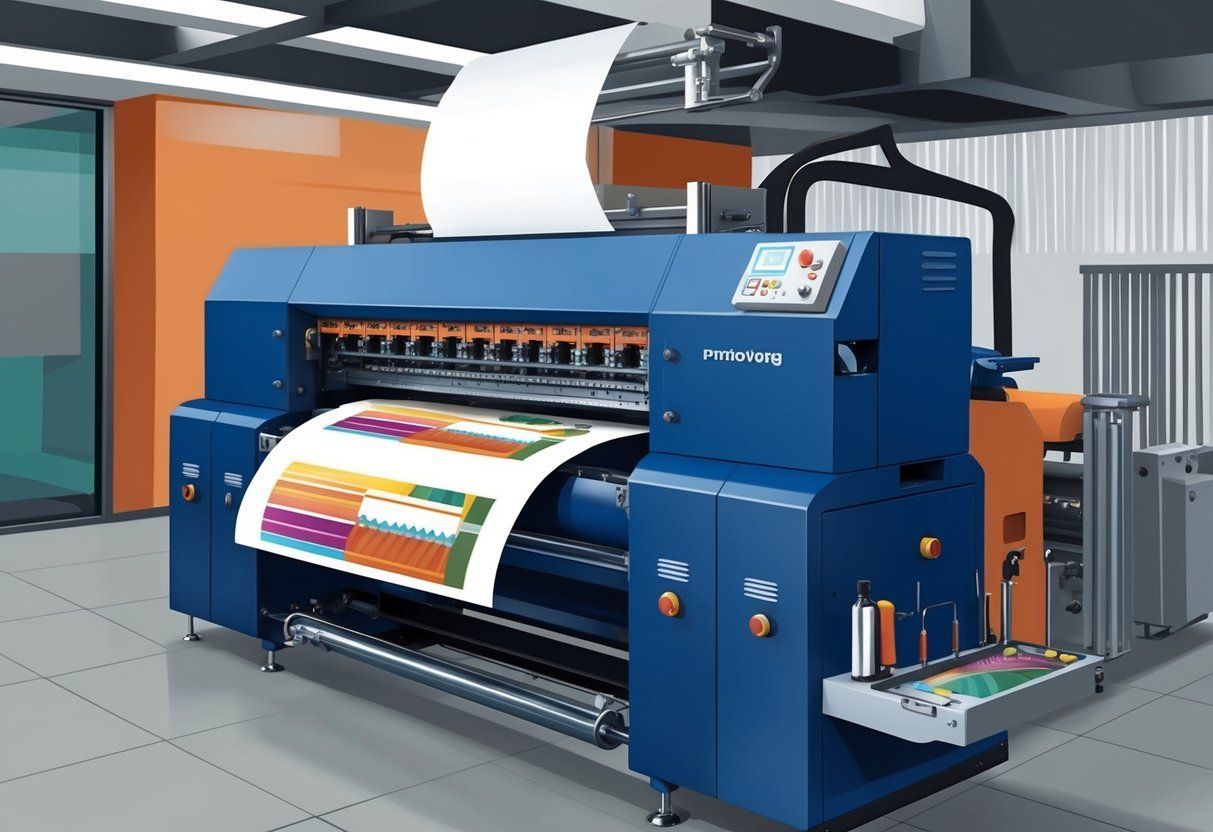
The printing industry has seen many advancements due to key players and innovations. Companies like HP and Canon have led the way in transforming printing quality and efficiency through the use of digital technology. Their contributions help shape the future of printing by meeting diverse user needs.
Companies Leading the Advancements: HP, Canon, and Others
HP and Canon are among the most important companies in the printing field. They focus on creating high-quality printers and ink systems.
HP introduced its Smart Tank series, which allows users to print thousands of pages at a low cost per page. This innovation helps businesses save money on supplies.
Canon has made strides with its imagePROGRAF line, targeting professional users who need top-notch quality. This series offers impressive color accuracy and detail.
Other notable players include Epson and Brother, which also innovate with eco-friendly technologies. They focus on reducing waste and improving efficiency in printing.
The Role of Big Brands in Shaping Printing Futures
Big brands like HP and Canon play a crucial role in setting industry standards. Their constant research and development push innovation forward.
Companies invest in digital technologies that enhance the user experience, including cloud printing and wireless connectivity.
These advancements improve convenience and productivity for both home and office users. Moreover, competition among these brands drives down costs, making high-quality printing accessible to many.
As they continue to evolve, the printing industry remains dynamic, responding to changing consumer needs and preferences.
Frequently Asked Questions
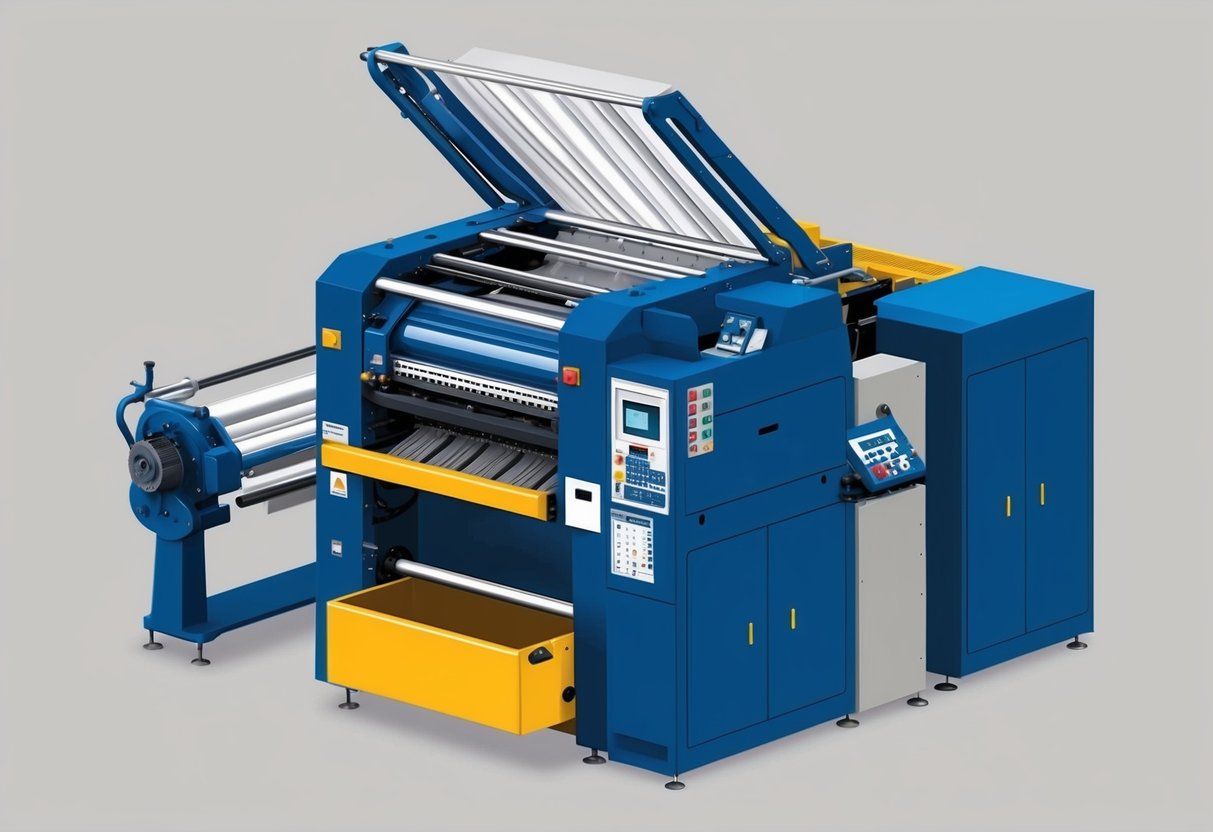
Printing technology has undergone many changes over the years. Each development has led to improvements in quality and efficiency.
What are the significant milestones in the history of printing technology?
Some key milestones include the invention of woodblock printing in China, the movable type press by Johannes Gutenberg, and the rise of digital printing. Each of these advances changed how information was shared.
How has the invention of the modern printing press changed print production?
The modern printing press allows for faster production and greater accuracy. It reduced the cost of printing and made it easier to produce books and materials in larger quantities.
In what ways has digital printing technology improved the efficiency of the printing process?
Digital printing enables quicker turnaround times and allows for on-demand printing. This minimizes waste and reduces the need for large print runs, making it more efficient.
What impact did the Gutenberg printing press have on the spread of literature?
Gutenberg’s press made books more accessible and affordable. This led to a increase in literacy and the spread of new ideas across Europe.
How has the evolution of printing technology affected the publishing industry?
The evolution of printing has transformed the publishing industry by allowing for greater variety in formats and content. Self-publishing and e-books are now more common, changing traditional publishing models.
What role did the printing press play in advancing the scientific revolution?
The printing press helped scientists share their findings more widely. This exchange of knowledge spurred advancements in science and education during the Renaissance period.…




